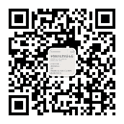| 基金项目: |
|
| 摘要点击次数: 2399 |
| 全文下载次数: 0 |
| 中文摘要: |
| 目的 介绍3D打印技术在住院医师经皮精准活检规范化培训中的应用。方法 将参加规范化培训的住院医师22名,分为创新教学法组和传统教学法组,每组11人。两组医师均接受经皮活检流程的规范化培训,操作中创新教学组给予3D打印模板结合引导操作,而传统教学组采用徒手操作;比较两组医师穿刺活检术所用时间、活检针调整次数、术中CT扫描次数、取材阳性率、并发症发生率等。结果 在经皮肺活检中,两组医师操作时间[(22.34±3.12) vs. (23.56±4.21)]、取材阳性率(72.73% vs. 90.91%)相比差异无统计学意义(P>0.05),但术中活检针调整次数[(2.11±0.67) vs.(1.02±0.93)]、术中CT扫描次数[(4.35±0.76) vs. (3.12±0.84)]、并发症发生率(54.55% vs. 27.27%)相比差异有统计学意义(P<0.05)。在经皮腹腔脏器活检中,两组医师操作时间[(16.25±2.89) vs. (15.12±2.59)]、术中CT扫描次数[(3.45±0.79) vs. (2.98±0.23)]、取材阳性率(78.57% vs. 88.24%)相比差异无统计学意义(P>0.05),但术中活检针调整次数[(2.43±0.43) vs. (1.84±0.89)]、并发症发生率(35.71% vs. 5.88%)相比差异有统计学意义(P<0.05)。结论 应用3D打印技术结合三维引导支架教学,可以使经皮活检技术流程化、规范化,对规范操作、提高医疗质量有重要意义,值得在临床教学工作中推广。 |
| 英文摘要: |
| Objective To introduce the application of 3D printing technology in standardized residency training of percutaneous precise biopsy. Methods Twenty-two residents were randomly divided into innovative teaching group and traditional teaching group, with 11 ones in each group. Residents in both groups received standardized training of percutaneous biopsy procedure. Innovative teaching group was given 3D printing template combined with guided operation, while traditional teaching group used bare hand operation. The time spent in biopsy, the times of needle adjustment, the frequency of CT scanning during operation, the positive rate of material sampling and the incidence of complications were compared between the two groups. Results During the percutaneous lung biopsy, two groups of physicians performed the procedure. There was no significant difference between the two groups in operation time [(22.34±3.12) vs. (23.56±4.21)] and the positive rate of sampling (72.73% vs. 90.91%) (P > 0.05), but there were significant differences in the times of adjusting biopsy needle during operation [(2.11±0.67) vs. (1.02±0.93)], the frequency of intraoperative CT scanning [(4.35±0.76) vs. (3.12±0.84)] and the incidence of complications (54.55% vs. 27.27%) (P < 0.05). In percutaneous peritoneal organ biopsy, there was no significant difference among the two groups in the operation time [(16.25±2.89) vs. (15.12±2.59)], the number of CT scans [(3.45±0.79) vs. (2.98±0.23)] and the positive rate (78.57% vs. 88.24%) (P > 0.05), but there were significant differences in times of intraoperative biopsy needle adjustments [(2.43±0.43) vs. (1.84±0.89)] and the incidence of complications (35.71% vs. 5.88%) (P < 0.05). Conclusion The application of 3D printing technology combined with the teaching of three-dimensional guided stent can make percutaneous biopsy technique stylized and standardized. It is of great significance to standardize the operation for improving the quality of medical treatment, and it is worth popularizing in clinical teaching. |
|
查看全文 查看/发表评论 下载PDF阅读器 |
|
| 关闭 |
|
|
|
